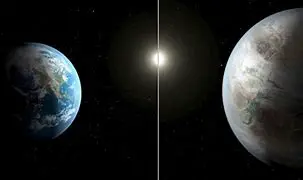亚太日报 Eric
Having landed a rover on the moon, a rover on Mars and its own space station, China is setting its sights on other distant solar systems. This month, Chinese scientists will release detailed plans for the country's first attempt to find an exoplanet. The aim is to search for extrasolar planets in other parts of the Galaxy and find the first orbiting Earth-like planet in the habitable zone of a sun-like star. For astronomers, such a planet, dubbed Earth 2.0, could harbor liquid water and even life.
To date, scientists have discovered more than 5,000 exoplanets in our galaxy, largely thanks to NASA's Kepler space telescope. It operated for nine years before running out of fuel in 2018. But none of these planets fit the definition of earth 2.0.
The Chinese mission, dubbed earth 2.0, promises to change that. The program, which will be funded by the Chinese Academy of Sciences, is currently completing its early design phase. If the design is approved in June, the team will receive funding to build the satellite. The team plans to launch the satellite into orbit by the end of 2026 via a Long March rocket.
Earth 2.0 is designed to carry seven space telescopes for four years of observation. Working together with many small telescopes will give scientists a much larger field of view than a single space telescope like Kepler. "In terms of space search capability, our satellite is 10 to 15 times larger than NASA's Kepler telescope." "Said Ge Jian, a researcher at the Shanghai Astronomical Observatories of the Chinese Academy of Sciences, who led the project. The team already has about 300 scientists and engineers, mostly from China, but Ge hopes scientists from around the world will be involved. "Earth 2.0 is an opportunity to strengthen international cooperation."
(Sources:Global Times)
 简体中文
简体中文





















